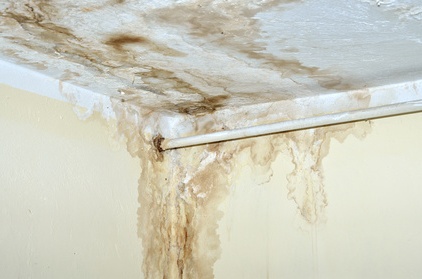6 Water Damage Restoration Do's and Don'ts.
6 Water Damage Restoration Do's and Don'ts.
Blog Article
How do you feel in regards to What You Can Do At Home To Prevent Fire And Water Damage?

Water provides life, water invasion on components where it's not supposed to be can result in damage. Houses with water damages smell moldy as well as old.
Water can originate from several sources such as hurricanes, floodings, ruptured pipelines, leakages, and sewer problems. In case you experience water damages, it would certainly be good to understand some safety and security preventative measures. Here are a few guidelines on how to handle water damages.
Do Prioritize Home Insurance Coverage
Water damages from flooding as a result of hefty winds is seasonal. Nonetheless, you can additionally experience an abrupt flooding when a faulty pipe suddenly bursts into your house. It would be best to have home insurance that covers both acts of God such as all-natural tragedies, and also emergency situations like damaged plumbing.
Don't Forget to Turn Off Utilities
This cuts off power to your whole residence, preventing electrical shocks when water comes in as it is a conductor. Don't neglect to turn off the main water line shutoff.
Do Stay Proactive and also Heed Climate Informs
Tornado floods can be very unpredictable. If there is a background of flooding in your community, remain ready and aggressive. If you live near a river, lake, or creek , pay attention to evacuation warnings. Secure valuables from the very beginning and basement, after that placed them on the highest possible degree. Doing so reduces prospective property damage.
Do Not Neglect the Roofing System
Before the weather condition transforms shocking, make sure you have a roofing assessment. Actually, it would certainly be prudent to receive this service yearly as it can reduce complicated problems. You can prevent rainfall damages if there are no openings as well as leakages in your roofing. Your contractor will certainly additionally care for damaged seamless gutters or any other indicators of weakening. This will certainly protect against water from moving down your walls and soaking your ceiling.
Do Focus On Little Leaks
A ruptured pipeline doesn't take place over night. Generally, there are red flags that suggest you have actually damaged pipes in your house. For instance, you might see gurgling paint, peeling off wallpaper, water touches, water stains, or leaking noises behind the wall surfaces. Ultimately, this pipe will certainly rupture. Ideally, you need to not wait on points to escalate. Have your plumbing fixed before it results in substantial damages.
Don't Panic in Case of a Ruptured Pipe
Maintaining your presence of mind is essential in a time of dilemma. Panicking will just worsen the issue due to the fact that it will suppress you from acting fast. Timing is crucial when it comes to water damages. The longer you wait, the more damages you can anticipate. Thus, if a pipe bursts in your residence, promptly shut off your primary water shutoff to remove the source. Disconnect all electric outlets in the area or turn off the circuit breaker for that component of the residence. Finally, call a trustworthy water damage remediation professional for aid.
Water provides life, water invasion on parts where it's not meant to be can result in damages. Houses with water damages odor mildewy as well as old.
Water damage from flood fees to heavy winds is seasonal. You may see gurgling paint, peeling off wallpaper, water touches, water spots, or leaking noises behind the walls. When it comes to water damage, timing is vital.
Are Water Mitigation and Water Damage Restoration the Same Thing?
When are Water Mitigation Services Needed?
Water intrusion can come from small sources like a dishwasher leak or larger ones like rainwater causing inches of standing water in a basement. Other instances of damage that call for water mitigation services include:
Sewer backup, sump pump failure, or clogged toilets Toilet wax seal failure Shower pan corrosion Pipe leaks and ruptures Washer or icemaker line breaks HVAC drain line blockage A leaking roof Moisture behind walls Foundation cracks Mold Mold is a good example to illustrate how water mitigation works. We’ve often found that clients we do mold remediation services for had existing water damage issues that ended up leading to the mold damage. When performing water mitigation we look for what’s causing the water problem and for ways to stop mold before it multiplies and becomes a bigger concern.
Are You Currently Experiencing a Water Disaster?
If you’re in the middle of a water intrusion disaster, here are some important dos and don’ts to follow:
Don’ts:
Safety first! Do not enter a room with standing water until the electricity has been turned off! A regular household vacuum should never be used to pick up water. Never use electrical appliance if standing on a wet floor or carpet. Leave visible mold alone. Dos:
Call a water mitigation professional as soon as possible. Mold and other damage can begin within hours of a water intrusion. Mop and blot up as much water as possible. Remove non-attached floor coverings and mats but leave wall-to-wall carpeting removal to a pro. If there are window coverings like draperies that touch the water, loop them through a hanger and put them up on the rod. Remove wet cushions to dry and wipe down soaked furniture. Move valuables like paintings, photos, and art objects to a dry location. Books should be left tightly packed on shelves until it’s determined if they need specialized drying. Prop open closets, cabinets, and drawers to allow them to air out. https://cfrsfl.com/blog/are-water-mitigation-and-water-damage-restoration-the-same-thing/

I was guided to that editorial on Reducing Your Risk Of Water And Fire Damage At Home from someone on another website. Are you aware of someone else who is fascinated by the subject? Feel free to promote it. Bless you for your time. Visit again soon.
Report this page